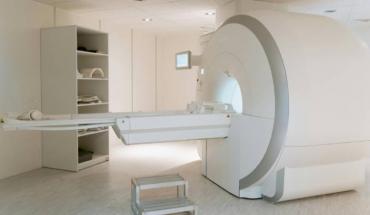Septic (Infectious) Arthritis
What is septic arthritis?
Septic arthritis is an infection in the joint (synovial) fluid and joint tissues. The infection usually reaches the joints though the bloodstream, although some joints may become infected due to an injection, surgery, or injury. Different bacteria and viruses can infect a joint and usually are associated with a person's age. The following types of infectious organisms have been associated with septic arthritis:
-
Staphylococci (common bacteria that often cause skin infections)
-
Haemophilus influenzae (bacteria that can infect the larynx, trachea, and bronchi)
-
Gram-negative bacilli (a group of bacteria, including Escherichia coli, or E. coli)
-
Streptococci (a group of bacteria that can lead to a wide variety of diseases)
The most prevalent sites of infection include the following:
-
Knee
-
Hip
-
Ankle
-
Elbow
-
Wrist
-
Shoulder
-
Pelvis
Most infections affect only one joint.
What is a joint?
Joints are the areas where two bones meet. Most joints are mobile, allowing the bones to move. Joints consist of the following:
-
Cartilage--A type of tissue that covers the surface of a bone at a joint. Cartilage helps reduce the friction of movement within a joint.
-
Synovial membrane--A tissue called the synovial membrane lines the joint and seals it into a joint capsule. The synovial membrane secretes synovial fluid (a clear, sticky fluid) around the joint to lubricate it.
-
Ligaments--strong ligaments (tough, elastic bands of connective tissue) surround the joint to give support and limit the joint's movement
-
Tendons--tendons (another type of tough connective tissue) on each side of a joint attach to muscles that control movement of the joint
-
Bursas--fluid-filled sacs, called bursas, between bones, ligaments, or other adjacent structures help cushion the friction in a joint
-
Synovial fluid--a clear, sticky fluid secreted by the synovial membrane
-
Femur--the thigh bone
-
Tibia--the shin bone
-
Patella--the knee-cap
-
Meniscus--a curved part of cartilage in the knees and other joints
Examples of the hip and knee joints follow:
| |
| Click Image to Enlarge |
| |
| Click Image to Enlarge |
What are the different types of joints?
There are many different types of joints and they are classified according to structure and to how they move. Joints that do not move are called "fixed." Other joints may move a little, such as the vertebrae. Examples of mobile joints include:
-
Ball-and-socket joints, such as the shoulder and hip joints--allow backward, forward, sideways, and rotating movements
-
Hinge joints, such as in the fingers, knees, elbows, and toes--allow only bending and straightening movements
-
Pivot joints, such as the neck joint--allow limited rotating movements
-
Ellipsoidal joints, such as the wrist joint--allow all types of movement except pivotal movements
| |
| Click Image to Enlarge |
What causes septic arthritis?
Many different types of bacteria can cause septic arthritis, as noted above. The most common type of bacteria is called Staphylococcus aureus, also referred to as S. aureus.
The bacteria can enter the body in a variety of ways. The most common routes of entry include the following:
-
Infection that spreads from another source inside the body, such as skin or genital infections
-
Infected wounds
-
Open fractures, or bones that penetrate through the skin
-
Foreign object penetrating the skin
-
Trauma
What are the symptoms of septic arthritis?
The most common joints affected by septic arthritis are the knee, hip, shoulder, elbow, and wrist. The following are the most common symptoms of septic arthritis. However, each child may experience symptoms differently. Symptoms may include:
-
Fever
-
Joint pain, usually severe
-
Joint swelling
-
Redness in the affected area
-
Warmth around the infected area
-
Limited use of the affected extremity
-
Guarding or protecting the affected area to prevent it from being touched or seen
-
Other symptoms of illness, such as vomiting, sore throat, and/or headache
Symptoms of septic arthritis may resemble other medical conditions or problems. Always consult your child's physician for a diagnosis.
How is septic arthritis diagnosed?
Prompt diagnosis of septic arthritis is necessary to prevent permanent damage to the joint.
In addition to a complete medical history and physical examination, diagnostic procedures for septic arthritis may include:
-
Removal of joint fluid--to examine for white blood cells and bacteria
-
Blood tests--to detect bacteria
-
Phlegm, spinal fluid, and urine tests--to detect bacteria and find the source of infection
-
X-ray--A diagnostic test which uses invisible electromagnetic energy beams to produce images of internal tissues, bones, and organs onto film
-
Bone scan--A nuclear imaging method to evaluate any degenerative and/or arthritic changes in the joints; to detect bone diseases and tumors; to determine the cause of bone pain or inflammation
-
Magnetic resonance imaging (MRI)--A diagnostic procedure that uses a combination of large magnets, radiofrequencies, and a computer to produce detailed images of organs and structures within the body
-
Radionuclide scans--nuclear scans of various organs to determine blood flow to the organs
Treatment for septic arthritis
Specific treatment for septic arthritis will be determined by your child's physician based on:
-
Your child's overall health and medical history
-
Extent of the condition
-
Your child's tolerance for specific medications, procedures, and therapies
-
Expectation for the course of the disease
-
Your opinion or preference
Septic arthritis usually requires immediate treatment with antibiotics which can improve symptoms within 48 hours. However, certain infections caused by fungi need treatment with anti-fungal medications, while viral infections usually have to run their course without treatment. To prevent accumulation of pus from the infection, which can damage the joint, pus may be drained with a needle, tube, or surgery. Other treatment may include:
-
Medications (for pain and fever)
-
Physical therapy (to maintain muscle strength)
-
Splinting the joint (to relieve pain)





















